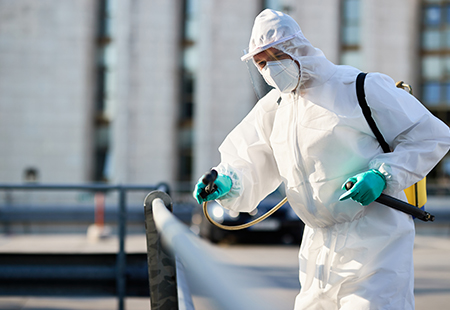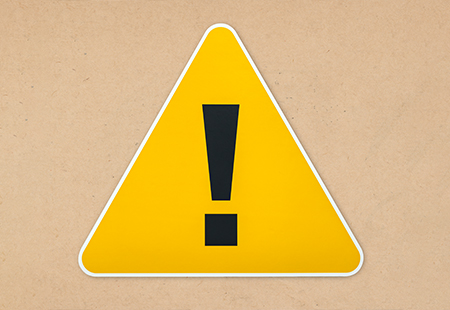Asbestos is still a danger
The National Cancer Institute states that there is no safe level of asbestos exposure.1 While the federal government has banned the sale, manufacture, and import of most asbestos products since the late 1980s, many structures remain contaminated. Construction workers, home-owners, and other people involved in renovation or demolition work could inhale dangerous asbestos fibers if and when they handle asbestos-affected materials.
Since asbestos is an incredibly resilient mineral, its fibers can stick to hair, skin, and clothing, sometimes for days and even weeks. Although most asbestos-related illnesses result from occupational exposure, or exposure in the workplace, secondary exposure from asbestos on clothing is itself a significant risk.
Understanding Asbestos
Asbestos is a group of minerals
Asbestos is the industrial name for six different categories of naturally occurring mineral. Every form of asbestos has incredible properties: they are strong, durable, and resistant to heat and fire.
While asbestos production exploded in the late 19th and early 20th centuries, people have used asbestos for thousands of years. Since the early 1900s, asbestos sales skyrocketed.
Manufacturers used asbestos in many different items, including:
| Wall and ceiling insulation | Asphalt roof shingles | Vinyl floor tiles |
| Home siding | Paint | Furnace and heating ducts |
| Pipe wraps | Cement | Electrical insulation |
| Carpet underlays | Insulating tapes | Wallpaper |
Asbestos was also used extensively to strengthen and fireproof industrial-grade factory machines and automotive parts. In fact, many older vehicles have asbestos lined brakes.
The Risks of Asbestos on Clothing
When asbestos fibers are inhaled, they can enter and get trapped inside the lungs. Over time, asbestos fibers can accumulate, damaging lung tissue and the entire respiratory system. Asbestos inhalation and exposure has been tied to many adverse health conditions, including different kinds of cancer.
People who worked in the asbestos industry, or handled asbestos-based products, are the highest risk for asbestos-related illnesses such as:
| Asbestosis | Asbestosis is a scarring of the lungs caused by the inhalation of asbestos fibers. |
| Pleural disease | Pleural disease is a non-cancerous lung condition that affects the membranes of the lung and chest, making it more difficult to breathe. |
| Mesothelioma | Mesothelioma refers to a set of cancers that affects the tissue surrounding most of the body’s major internal organs. People who inhale asbestos are most likely to be diagnosed with mesothelioma of the lung, or pleural mesothelioma. |
| Lung Cancer | Lung carcinoma can impair respiratory function and also spread to other parts of the body. Asbestos exposure can make it five times more likely to develop lung cancer. |
| Other Cancers | Asbestos is carcinogenic (causes cancer). Research is ongoing, but asbestos exposure has been connected to the diagnosis of other types of cancer. |
However, the durability of asbestos also makes it difficult to dispose of. When asbestos workers returned home, they often brought asbestos back with them on their skin, in their hair, and all over their clothes.
While asbestos may not be found in most newly-made items, it still lurks—often undetected—in many homes, offices, and schools. Anyone doing renovations in an older home or other structure should presume that certain materials are asbestos-affected.
While asbestos may not be found in most newly-made items, it still lurks – often undetected – in many homes, offices, and schools. Anyone doing renovations in an older home or other structure should presume that certain materials are asbestos-affected.
How to Test for Asbestos on Clothing
Asbestos products may be safe if left undisturbed. But construction work and renovations or demolition can scatter friable asbestos or release asbestos dust into the air.
Once asbestos is airborne, it can settle anywhere, including clothing. Since individual asbestos fibers can be smaller than the width of a human hair, they are very difficult to detect without professional training.
If you believe your clothes may have been contaminated by asbestos, you can take the following steps:
1. Isolate the area of suspected asbestos contamination.
People who do not absolutely need to be in a room or worksite should not be allowed entry. Anyone whose presence is necessary should wear a face mask and disposable clothing.


2. Do not attempt to pat or shake off asbestos.
This could create a dangerous cloud of asbestos fibers that could spread into other rooms.


3. While wearing rubber gloves, carefully remove the asbestos contaminated clothing.
If you do not have rubber gloves, use a damp towel to gently rub off any collections of asbestos dust.


4. Once you have removed your clothes, gently wet the clothes and place them in a sealable bag.


5. Contact an asbestos testing service and submit a sample of your clothing or the suspected asbestos-contaminated material.
Many states, cities, and counties maintain lists of registered asbestos testing laboratories and licensed asbestos removal services.


6. Properly dispose of any contaminated clothing by placing it into a sealed bag or container.
Asbestos waste should be taken to a landfill that can process asbestos materials. Even if an asbestos removal service can clean the clothing, it is often safer to get rid of it than risk further spread.


What to Do If You Suspect You Were Exposed To Asbestos
Asbestos symptoms can take decades to develop. However, some asbestos-related problems, such as asbestos rash symptoms, could appear quickly.
If you suspect you have been exposed to asbestos, you should discuss it with your healthcare provider. A physician can perform additional medical procedures, such as a chest x-ray, to see whether you have significant and potentially dangerous accumulations of asbestos in your lungs.
AsbestosClaims.law is your comprehensive resource for all things asbestos. We hope this information helps you. If you have any additional questions or concerns related to asbestos, including testing for exposure or how to file a claim, please get in touch by email at [email protected], or call or text us at (833) 4-ASBESTOS (427-2378) or (206) 455-9190.
1 National Cancer Institute, Asbestos Fact Sheet
(“The overall evidence suggests there is no safe level of asbestos exposure.”)




